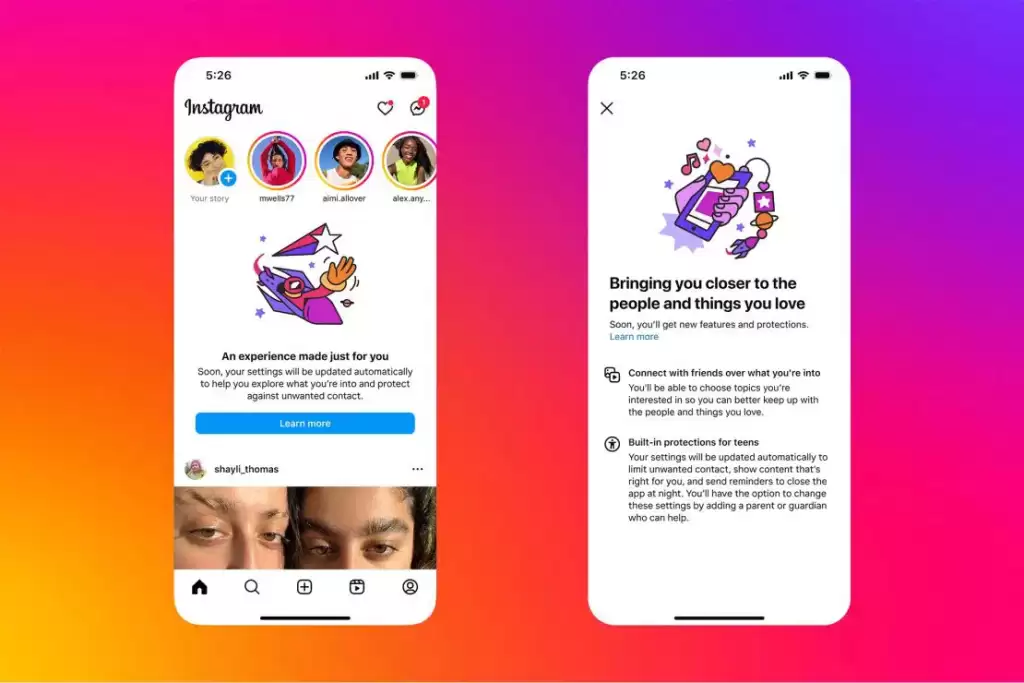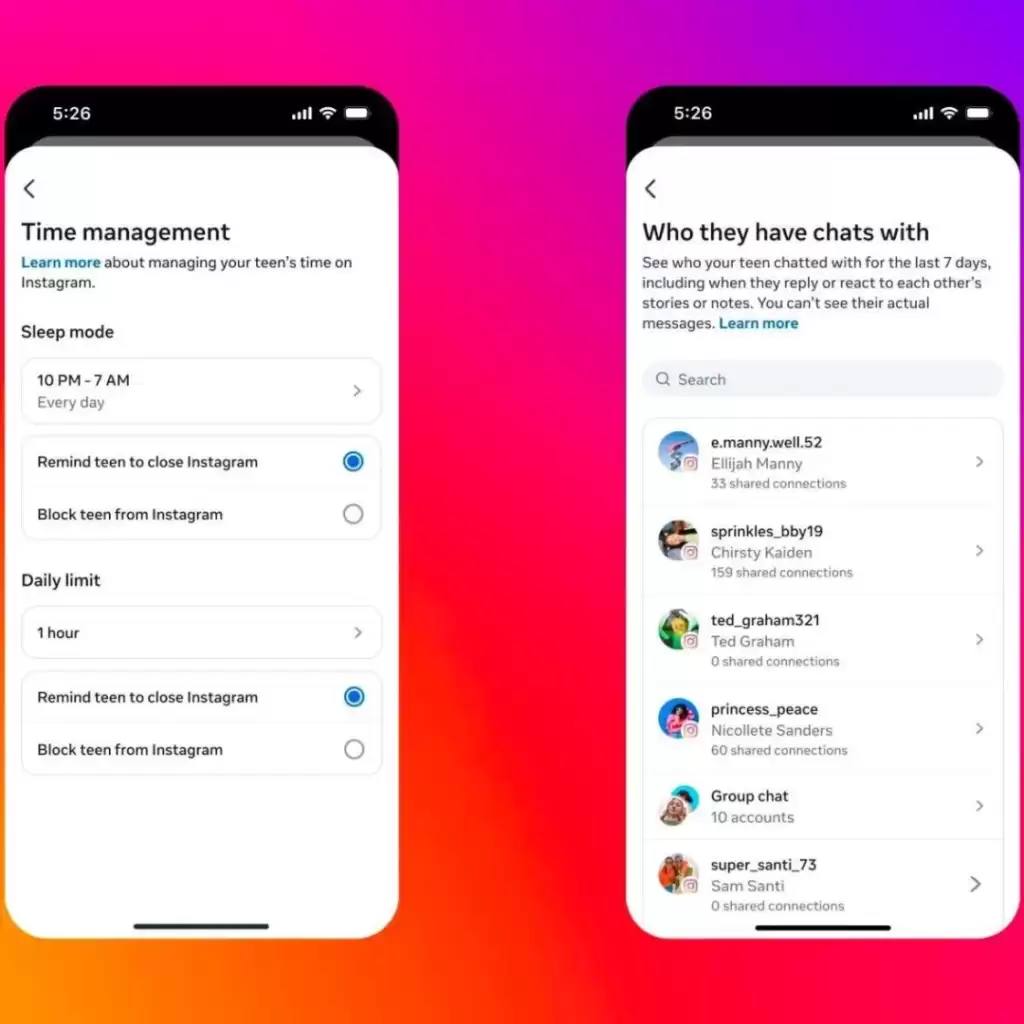Instagram is taking a major step toward improving the safety and well-being of teenagers on its platform by launching a series of updates focused on protecting young users. These updates include enhanced privacy controls, increased parental oversight tools, and time-based restrictions to promote healthier use of the app. The initiative comes amid growing concerns about the potential dangers teenagers face on social media, such as exposure to inappropriate content, online harassment, and excessive screen time.
Automatic Application of Teen Safety Settings
Starting next week, Instagram will automatically apply new teen safety settings to all accounts for users under the age of 18. This feature ensures that teen accounts will be private by default, limiting the visibility of their posts and who can interact with them. These measures are designed to shield teens from harmful or inappropriate content, safeguarding them from potential dangers such as unwanted contact from strangers.
By making teen accounts private by default, Instagram aims to offer a higher level of protection to its youngest users. Teens will have control over who can follow them, view their posts, or send them direct messages. These privacy settings are essential in ensuring that young users are not exposed to unwanted or harmful interactions online. This shift aligns with Instagram’s broader commitment to promoting a safer environment for teens on its platform.

Expanded Parental Supervision and Controls
In addition to enhanced privacy settings, Instagram is strengthening its parental oversight tools, offering parents more control over their children’s social media usage. This update includes features that allow parents to monitor their teens’ activity on the platform, set daily time limits, and even block the app’s usage during specific hours, such as during school or bedtime.
Instagram is also encouraging teens to adopt parental supervision by prompting them to invite their parents to oversee their account. This collaborative approach between teens and parents is expected to foster more open communication about social media habits while providing parents with greater transparency into their child’s online activity.
The new parental control features allow parents to review the accounts their teens follow, the content they are exposed to, and the time spent on the app. By giving parents more control, Instagram hopes to create a safer digital environment for teens while promoting responsible social media use.
SEE ALSO: “Meta and Spotify Tease New Feature to Seamlessly Share Your Music on Instagram”
Time-Based Restrictions to Reduce Screen Time
Recognizing the impact of excessive screen time on mental health and well-being, Instagram is introducing time-based restrictions for teen users. Under the new update, teens will receive reminders to take breaks after spending one hour on the app. This feature encourages young users to take regular breaks, reducing the potential negative effects of prolonged social media exposure.
Additionally, the platform will implement a “sleep mode,” where the app will limit its functions during nighttime hours. This sleep mode is designed to prevent teens from engaging with the app late at night, promoting healthier sleep habits and limiting excessive use during hours typically reserved for rest.
These time-based restrictions are part of Instagram’s broader effort to prioritize teen safety by addressing the concerns associated with prolonged screen time and its effects on mental and physical health. By helping teens manage their time on the app, Instagram aims to reduce the risks of social media addiction and overexposure to potentially harmful content.

Addressing Criticism and Leveraging AI for Age Verification
Meta, Instagram’s parent company, has faced considerable criticism in recent years for not doing enough to safeguard teens on its platforms. Concerns from parents, educators, and lawmakers have focused on the types of content teens are exposed to, who they interact with, and how much time they spend on social media.
In response, Instagram is not only improving privacy settings and parental controls but also tackling one of the most significant challenges: age verification. Teens who lie about their age when creating accounts pose a serious risk to the effectiveness of safety measures. To combat this, Meta is rolling out advanced AI technology to detect age discrepancies and ensure that teen safety features are applied to the correct users.
This AI-driven system uses facial recognition technology, behavior analysis, and other machine learning techniques to identify potential age misrepresentation. By verifying age more accurately, Instagram aims to close a loophole that has previously allowed underage users to bypass safety measures, further strengthening its commitment to teen safety.
Ongoing Commitment to Teen Safety
Instagram’s latest updates reflect its ongoing dedication to making the platform safer for teens. By introducing stronger privacy controls, enhancing parental oversight, and implementing time management tools, the platform is addressing key concerns surrounding teen safety in the digital age. These updates represent a proactive approach to protecting young users from the unique risks of social media, such as cyberbullying, exposure to harmful content, and social media addiction.
As Instagram continues to roll out these changes, the platform remains committed to improving its safety measures. Regular updates to privacy settings, the use of AI to detect age discrepancies, and the expansion of parental controls will ensure that Instagram is a safer, more secure space for young users. By placing teen safety at the core of its mission, Instagram aims to foster a positive, healthy social media environment for the next generation of users.
In an age where social media plays a pivotal role in teenagers’ lives, Instagram’s new updates are a vital step toward creating a safer digital ecosystem. With the platform’s ongoing efforts to prioritize teen safety, parents can feel more secure about their children’s online experiences while empowering teens to use social media responsibly.



